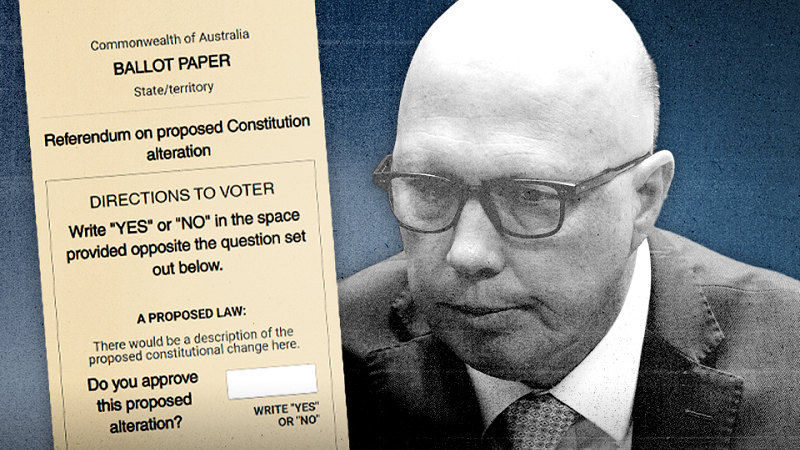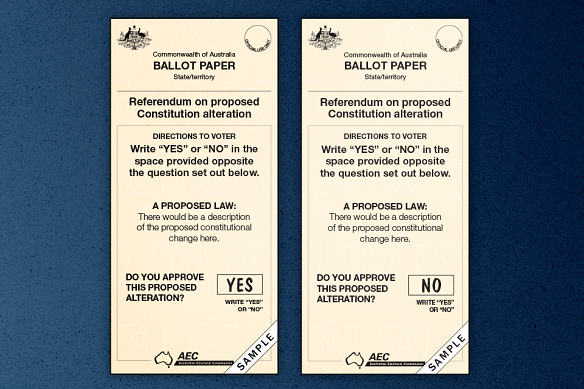Save articles for later
Add articles to your saved list and come back to them any time.
Opposition Leader Peter Dutton will complain to the Australia Electoral Commission after Commissioner Tom Rogers said a tick could be counted as a Yes vote but a cross would not count as a No vote on the Voice to parliament referendum.
In an interview on Sky News on Wednesday, Rogers stressed that Australians should write either Yes or No on the referendum ballot paper in English, but added: “There are some savings provisions, but I need to be very clear with people: when we look at that, it is likely that a tick will be accepted as a formal vote of ‘Yes’, but a cross will not be accepted as a formal vote.”
Australian Electoral Commissioner Tom Rogers during a Senate estimates hearing.Credit: Alex Ellinghausen
A spokesman for the AEC said the rules for referendums had been the same for a long time and that the “savings provisions” – that is, the ability to count a vote where the instructions have not been followed but the voter’s intention is clear – had been in place for 30 years.
Prime Minister Anthony Albanese will formally announce the date of the referendum, which is widely expected to be October 14, in Adelaide next Wednesday.
Examples of referendum ballots marked “yes” or “no”. Credit: AEC
Dutton seized on Rogers’ “outrageous” comments in an interview with radio station 2GB and claimed the ruling would give the Yes campaign a clear advantage.
“If a tick counts for Yes, then a cross should count for No – it’s as clear as that,” he said.
“I just think Australians want a fair vote, they want to be informed, they want to have the detail before them.”
“If legislation is required to clarify this, then we’ve got plenty of time. Parliament’s back the week after next, and we would support a sensible bill to clarify it that the prime minister can draft up … You can’t have a situation where they’re trying to provide favour to one side in a democratic election.”
In a statement, the AEC said the savings provisions existed for federal elections as well and that the commission had no discretion to simply ignore them.
“They are a long-standing legislative requirement. The AEC’s accepted legal advice regarding the application of savings provisions to ticks and crosses since 1988 (over 30 years and multiple referendums) remains the same. This is not new,” the spokesman said.
“The issue with a cross is that on many forms people in Australia use in daily life, and in some other languages, it represents a ‘check mark’ indicating yes – it therefore leaves it open to interpretation or challenge by a scrutineer. A tick would also be open to interpretation and may not count depending on just how clear that mark is on the ballot paper.”
“The same issues exist for just the letter ‘Y’ or ‘N’ – if the handwriting makes it unclear it could risk an informal vote. This is why the commissioner and the AEC will be very clear and regular with our communication that people need to write the full word ‘yes’ or ‘no’ in English, in full.”
The spokesman added that the vast majority of voters would follow the AEC’s voting instructions and pointed out that in the 1999 referendum, just 0.86 per cent of votes cast were informal, and of those informal votes, only a few related to people using either a tick or a cross.
This masthead has asked Dutton’s office for a copy of the letter to the AEC.
Cut through the noise of federal politics with news, views and expert analysis. Subscribers can sign up to our weekly Inside Politics newsletter here.
Most Viewed in Politics
From our partners
Source: Read Full Article







